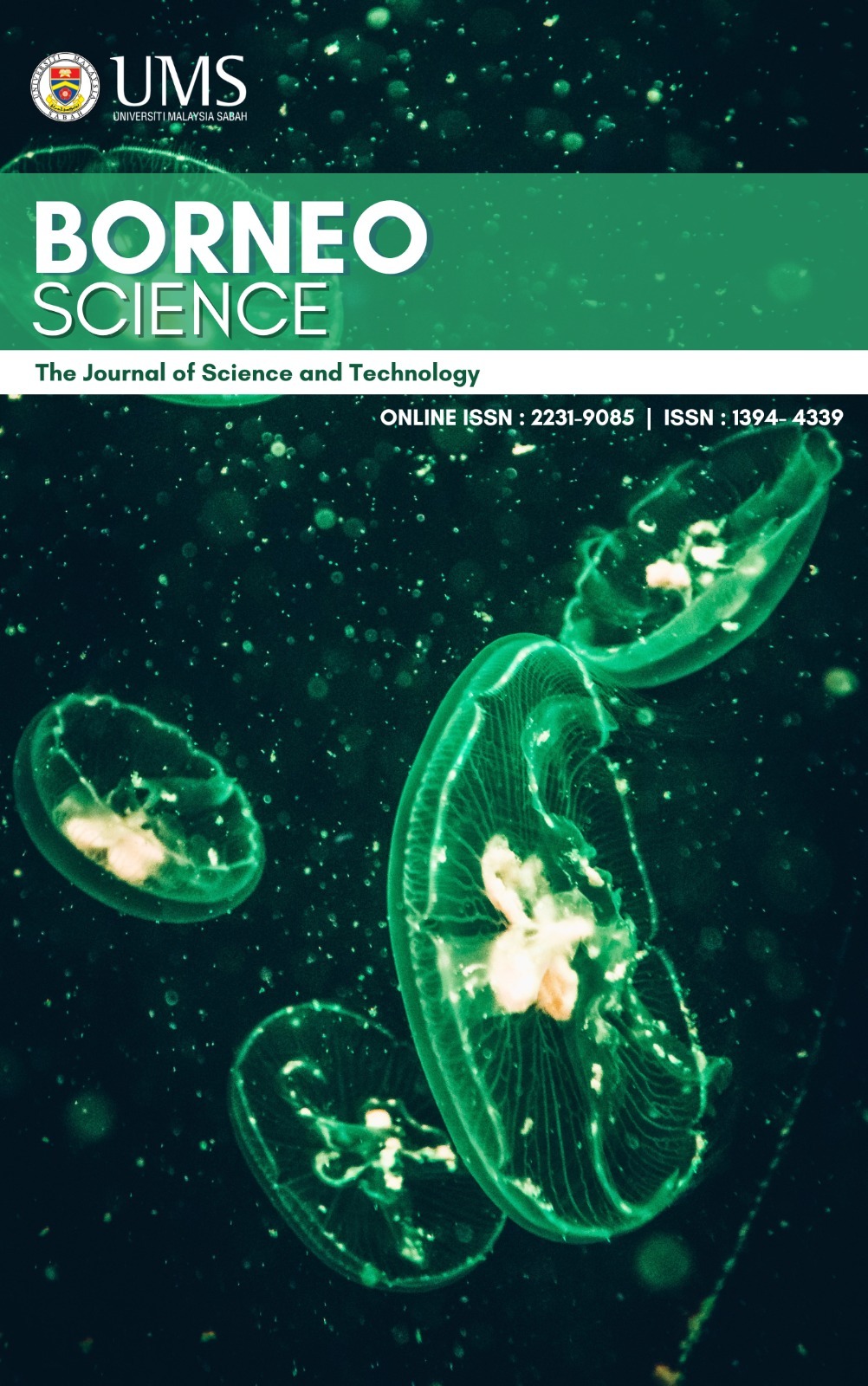A PRELIMINARY STUDY OF FLORAL DEVELOPMENT AND BREEDING SYSTEM OF Orthosiphon aristatus (BLUME) MIQ
DOI:
https://doi.org/10.51200/bsj.v39i2.4423Keywords:
Orthosiphon aristatus, floral biology, artificial pollinationAbstract
Orthosiphon aristatus (Blume) Miq. belongs to the family Lamiaceae. There are two varieties, white corolla (OAV-1) and purple corolla (OAV-2) varieties. An observation on inflorescence and flower development of O. aristatus was conducted alongside with the study on its breeding system. Inflorescence of OAV-1 and OAV-2 varieties started to develop approximately two and a half months after transplanting the rooted cuttings. The initiation of inflorescence until the senescence took about 75 days. Flower buds started to appear on the inflorescence approximately after 17 days of the commencement of inflorescence development. The development from flower bud until flower senescence took around 50 days. The artificial pollination tests, however, suggested that O. aristatus is predominantly a self-pollinated species.
References
Abrol, D. P. 2011. Pollination biology: biodiversity conservation and agricultural production. Springer Science & Business Media.
Adnyana, I. K., Setiawan, F. & Insanu, M. 2013. From ethnopharmacology to clinical study of Orthosiphon stamineus Benth. studies 1. International Journal of Pharmacy and Pharmaceutical Sciences: 5(3): 66-73.
Ahamed Basheer, M. K. & Abdul Majid, A. M. S. 2010. Medicinal potentials of Orthosiphon stamineus Benth. WebmedCentral CANCER 1:WMC001361
Almatar, M., Rahmat, Z. & Salleh, F. M. 2013. Preliminary morphological and anatomical study of Orthosiphon stamineus. Indian Journal of Pharmaceutical and Biological Research: 1:1 -6.
Ameer, O. Z., Salman, I. M., Asmawi, M. Z., Ibraheem, Z. O. & Yam, M. F. (2012). Orthosiphon stamineus: traditional uses, phytochemistry, pharmacology, and toxicology. Journal of medicinal food: 15:678-690
Chan, L. K. & Loo, P. S. 2006. Morphological similarities and differences between the two varieties of cats whiskers (Orthosiphon stamineus Benth.) grown in Malaysia. International Journal of Botany: 2(1):1 -6
Frankel, R. & Galun, E. 2012. Pollination mechanisms, reproduction and plant breeding. Springer Science & Business Media.
Hirota, S. K., Nitta, K. Kim., Y., Kato, A., Kawakubo, N., Yasumoto, A. A. & Yahara, T. 2012. Relative Role of Flower Color and Scent on Pollinator Attraction: Experimental Tests using F1 and F2 Hybrids of Daylily and Nightlily. PLOS ONE 7:e39010
Lee, W. 2004. Micropropagation and cell culture of misai kucing (Orthosiphon stamineus Benth) and detection of rosmarinic acid in the in vitro cultures. M. Sc. thesis. Universiti Sains Malaysia, Penang, Malaysia Malaysia Herbal Monograph Committee. 2009. Malaysian Herbal Monograph. Forest Research Institute Malaysia
Pathirana, R. 1994. Natural Cross-Pollination in Sesame (Sesamum indicum L.). Plant Breeding: 112:167-170
van der Pijl, L. 1972. Functional considerations and observations on the flowers of some Labiatae. Blumea-Biodiversity, Evolution and Biogeography of Plants: 20:93-103.
Weiss, E. 1971. Castor, sesame and safflower. London:Leonard Hill






